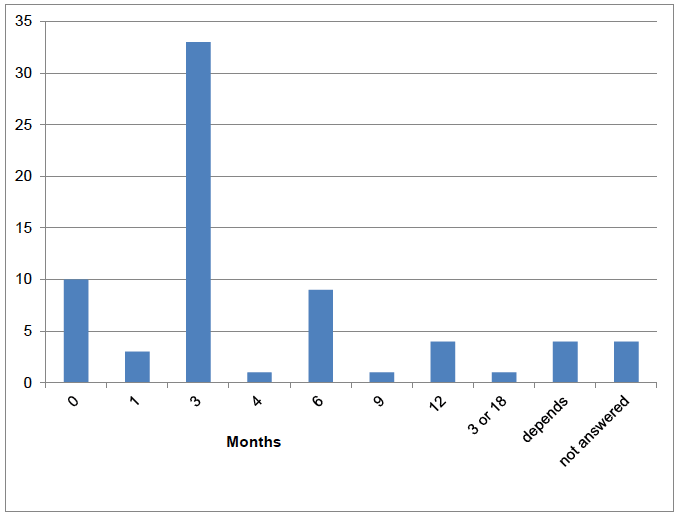Scottish Bovine Viral Diarrhoea eradication scheme: consultation on phase five responses
Analysis of responses to the Scottish Government's public consultation on phase five of the Bovine Viral Diarrhoea (BVD) eradication scheme.
Proposal 1 - Testing requirement for "not negative" breeding herds
Under the current BVD Order, keepers of breeding cattle herds must screen their herd annually for BVD in order to obtain a BVD herd status. If the status is "not negative", animals cannot be moved out of the herd unless they have an individual negative BVD status, they are going direct to slaughter or (under exceptional circumstances) they are licensed to move. Currently, there is no legal requirement to investigate the cause of the "not negative" herd status, although the official guidance advises farmers to do so.
To increase pressure on herds with a "not negative" BVD status, we consulted on a new testing requirement that would force cattle keepers to investigate the extent of BVD exposure in their herd and to identify the source of infection, if present.
This new testing requirement would apply to all "not negative" herds that have had a "not negative" BVD status for at least 13 months. In these herds, the cattle keeper must determine an individual status for each animal. For many herds, this "sweeper test" would require only partial testing of the herd as some animals will already have an assumed status or individual status due to previous testing in the herd: animals that already have a status will not need to be re-tested.
Question 1: Do you think that keepers of breeding herds that have recurring annual "not negative" BVD statuses should investigate the cause of BVD virus exposure in their herd?
Respondents overwhelmingly agreed with requiring "not negative" herds to investigate their BVD status: 93% answered yes, with comments such as "We will never get rid of this disease without investigating the source". There was strong support for an increase in testing for herds that have been BVD "not negative" for 13 months or longer. Another typical comment was "farmers have had more than enough time to voluntarily investigate BVD so I feel it is time to take a stronger stance".
Figure 2: Do you agree that keepers of cattle breeding herds that have recurring annual "not negative" BVD statuses should investigate the cause of BVD virus exposure in their herd?

Question 2: Should there be exemptions to the "sweeper test" where farms have a breeding herd but also buy stores for further fattening or finishing? If so, how would this work in practice?
Respondents focused on the suggestion that the breeding herd should be tested while any store animals might be exempt from testing. Opinion was divided, with 67% saying that there should be no exemptions to testing in "not negative" herds and 19% saying that exemptions should be permitted. Those respondents who said "no" to exemptions pointed out the inherent biosecurity challenge in maintaining separation between fattening and breeding enterprises on the same premises, and therefore the necessity to test all the cattle. Some respondents who said "yes" to the exemption highlighted the additional cost for keepers with a large stores enterprise. Respondents in all groups emphasised the importance of sourcing cattle responsibly, and that cattle born on negative holdings should be regarded as low risk and therefore be exempt from the sweeper test.
Figure 3: Should there be exemptions to the "sweeper test" where farms have a breeding herd but also buy stores for further fattening or finishing?

Question 3: How long should affected herds be given to complete the "sweeper test"?
66% of respondents said that the test should be completed as soon as possible or within 3 months. 14% of respondents said that keepers should be given up to 6 months, 7% said up to 12 months should be allowed. 7% of respondents pointed out that the cattle keepers' ability to comply with the testing deadline would depend on the time of year: handling beef cattle is much easier in the winter, assuming that the cattle are housed.
Figure 4: How long should affected herds be given to complete the "sweeper test"?

Question 4: To take account of "Trojan cows" (which appear healthy but are carrying a PI calf) should the "sweeper test" include calf screening for 12 months following completion of individual testing?
89% of respondents agreed that the "sweeper test" should include a 12 month period of calf screening. A typical comment was "I have seen breakdowns due to omitting to test these animals". 3% disagreed.
Figure 5: Should the "sweeper test" include calf screening for 12 months following individual testing?

Contact
There is a problem
Thanks for your feedback